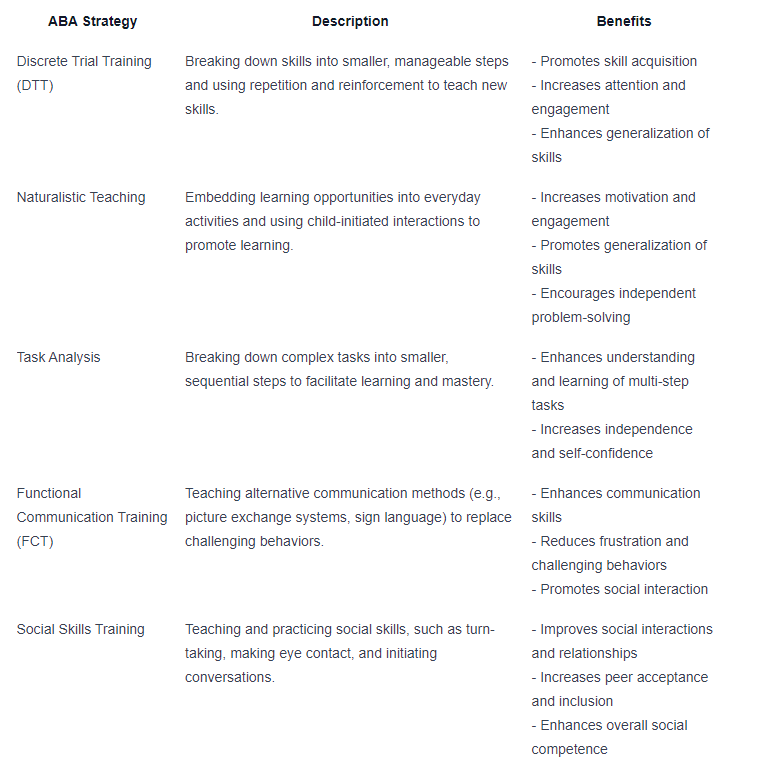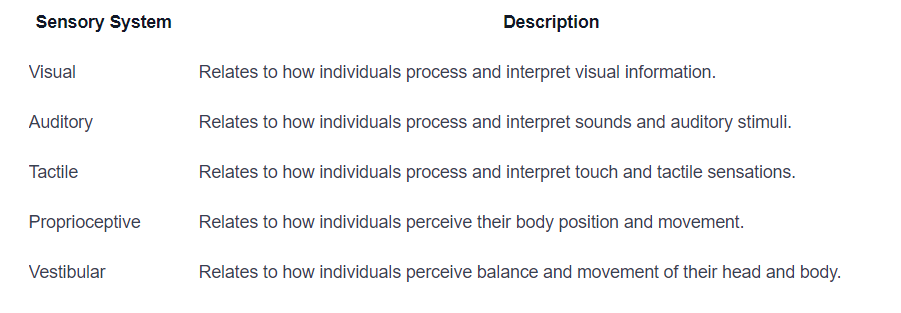A List of Important Skills for Autism Teachers
Discover proven autism teaching strategies for empowering educators. From visual supports to collaboration, unlock the potential of every student.

Understanding Autism Teaching Strategies
When it comes to teaching individuals with autism, effective teaching strategies play a crucial role in promoting their learning, development, and overall well-being. Educators who work with students on the autism spectrum need to be equipped with the right skills and knowledge to create an inclusive and supportive learning environment. In this section, we will explore the importance of effective teaching strategies for autism and key considerations for autism teachers.

Importance of Effective Teaching Strategies for Autism
Effective teaching strategies are essential for individuals with autism as they can significantly impact their ability to learn, communicate, and interact with others. These strategies are designed to address the unique learning characteristics and needs of individuals on the autism spectrum, providing them with the best opportunities for growth and success.
By utilizing evidence-based teaching strategies, educators can create a positive and supportive classroom environment that fosters learning and development. Effective teaching strategies for autism often focus on individualized instruction, visual supports, communication and social skills, applied behavior analysis, sensory integration techniques, and collaboration with parents and other professionals.
Key Considerations for Autism Teachers
- Individualization: Recognize that each student with autism is unique and has their own strengths, challenges, and learning style. Individualized instruction, such as through Individualized Education Plans (IEPs), allows educators to tailor teaching strategies to meet the specific needs of each student.
- Visual Supports: Utilize visual supports, such as visual schedules and social stories, to enhance understanding and communication. Visual supports provide individuals with autism visual cues and structure, helping them navigate daily routines and social situations more effectively.
- Communication and Social Skills: Focus on enhancing communication skills through methods like Picture Exchange Communication System (PECS) and Augmentative and Alternative Communication (AAC). Promote social skills development through the use of social stories and social skills groups, providing opportunities for individuals with autism to practice social interactions.
- Applied Behavior Analysis (ABA): Understand the basics of Applied Behavior Analysis and implement ABA strategies in the classroom. ABA techniques help individuals with autism develop new skills, reduce challenging behaviors, and increase positive behaviors.
- Sensory Integration: Recognize the impact of sensory processing issues on individuals with autism. Implement sensory integration strategies in the classroom to create a sensory-friendly environment that supports their sensory needs and reduces sensory overload.
- Collaboration and Teamwork: Foster collaboration with parents and caregivers to ensure consistency and continuity of support between home and school. Collaborate with other professionals, such as speech therapists and occupational therapists, to provide a comprehensive and integrated approach to supporting individuals with autism.
Visual Supports and Structured Environment
Visual Supports: Visual Schedules and Social Stories
Provides structure and routine
Reduces anxiety and uncertainty
Enhances understanding and comprehension
Promotes independence and self-regulation
Increases social understanding and awareness
Supports social skill development
Provides a framework for appropriate behavior
Reduces anxiety in social situations
Creating a Structured and Predictable Environment
Strategies for Creating a Structured Environment
Establish consistent routines and schedules
Use visual supports, such as visual schedules and labels
Provide clear and concise instructions
Maintain a clutter-free and organized space
Minimize sensory distractions, such as loud noises or bright lights
Communication and Social Skills
Enhancing Communication Skills: PECS and AAC

Promoting Social Skills: Social Stories and Social Skills Groups

Individualized Instruction and Differentiation
Individualized Education Plans (IEPs)
An IEP typically includes the following components:
- Present Levels of Performance: This section provides a snapshot of the student's current academic and functional abilities, outlining their strengths and areas of need.
- Goals and Objectives: IEP goals are specific, measurable targets that address the student's unique learning requirements. These goals are designed to be achievable within a specific timeframe.
- Accommodations and Modifications: Accommodations are adjustments made to the learning environment, such as additional time for assignments or preferential seating. Modifications, on the other hand, involve changes to the curriculum itself, allowing students to access content at their individual skill level.
- Related Services: Related services, such as speech therapy or occupational therapy, are often included in the IEP to address specific needs related to communication, sensory integration, fine motor skills, and more.
- Transition Planning: For older students, the IEP may also incorporate transition planning, focusing on the skills necessary for post-secondary education, employment, and independent living.
Differentiating Instruction for Diverse Learners
Differentiation strategies may include:
- Flexible Grouping: Grouping students based on their specific learning needs and abilities allows for targeted instruction and peer collaboration.
- Varied Instructional Materials: Utilizing a range of materials, such as visual aids, manipulatives, and technology, ensures that students can access content through their preferred learning style.
- Modified Assignments: Adapting assignments to match the individual skill level and interests of students helps to promote engagement and successful completion.
- Additional Support: Providing additional support through paraprofessionals, peer mentors, or assistive technology can facilitate learning and independence.
- Alternative Assessment Methods: Offering alternative ways for students to demonstrate their understanding, such as oral presentations or visual projects, allows for diverse forms of assessment.
Applied Behavior Analysis (ABA)
Basics of ABA
Key components of ABA include:
- Antecedent: This refers to the events or circumstances that occur before a behavior. Understanding the antecedents helps to identify triggers or cues that may influence behavior.
- Behavior: The behavior itself is the target for intervention. It can be any observable and measurable action or response.
- Consequence: The consequence is what follows the behavior. It can be positive reinforcement (reward), negative reinforcement (removal of an aversive stimulus), or punishment (application of an aversive stimulus). The choice of consequence depends on the behavior being addressed and the individual's unique needs.
- Reinforcement: Reinforcement is a key component of ABA. It involves providing rewards or consequences to increase the likelihood of desired behaviors occurring again in the future.
Implementing ABA Strategies in the Classroom

Sensory Integration Techniques
Understanding Sensory Processing Issues

Sensory Integration Strategies for the Classroom
Implementing sensory in the classroom can help create a more supportive and inclusive learning environment for students with autism. Here are some strategies that can be effective:
Collaboration and Teamwork
Collaborating with Parents and Caregivers
Here are some key ways in which autism teachers can collaborate with parents and caregivers:
- Regular Meetings: Schedule regular meetings to discuss the student's progress, goals, and any concerns or challenges they may be facing. These meetings provide an opportunity to exchange information and ensure that everyone is on the same page.
- Sharing Resources: Share helpful resources, such as articles, books, or websites, that can assist parents and caregivers in understanding autism and implementing effective strategies at home. This collaboration ensures that support extends beyond the classroom.
- Homework and Activities: Provide parents and caregivers with guidance on homework assignments and activities that can be done at home to reinforce learning and promote skill development. This collaboration strengthens the connection between home and school.
- Parent Training Programs: Offer parent training programs or workshops to provide parents and caregivers with the knowledge and tools to support their child's learning and development effectively. These programs empower parents and promote a team approach.
Working with Other Professionals: Speech Therapists, Occupational Therapists, etc.
Here are some key points to consider when working with other professionals:
- Open Communication: Maintain open lines of communication with other professionals involved in the student's care. This allows for the exchange of information, progress updates, and the coordination of strategies to ensure a cohesive approach.
- Sharing Goals and Strategies: Collaborate with other professionals to align goals and strategies across different therapy sessions. Consistency in approach helps reinforce learning and promotes generalization of skills.
- Joint Planning: Engage in joint planning sessions to discuss individual student needs, share insights, and develop cohesive intervention plans. This collaborative approach ensures that all professionals are working towards common goals.
- Professional Development: Attend professional development opportunities and workshops together with other professionals to enhance knowledge and skills in autism intervention. This shared learning experience strengthens the collaboration and creates a unified approach.
Sources
https://work.chron.com/list-important-skills-autism-teachers-4932.html
https://www.zippia.com/autistic-teacher-jobs/skills/
Similar articles
We’re here to help you

Our team is here to assist you in this process. Contact us for any assistance.
it’s easy to apply
We Accept Most Insurances
Our in-network insurance partnerships make ABA therapy more accessible to families throughout our service areas.







Our Insurance Process
We'll request your insurance details to help us verify your plan's coverage for ABA therapy. Once we've received this information, we'll walk you through your benefits, including copayments, deductibles and out-of-pocket maximums, so you know what to expect in advance.
Our team will then handle the preauthorization and all the necessary paperwork.
.svg)





















.jpeg)


































.jpeg)




.jpeg)







.jpeg)











.jpeg)
















